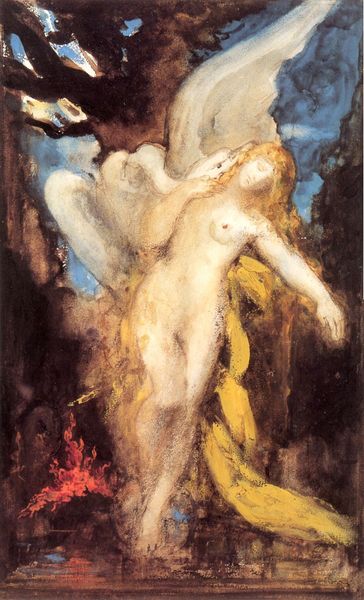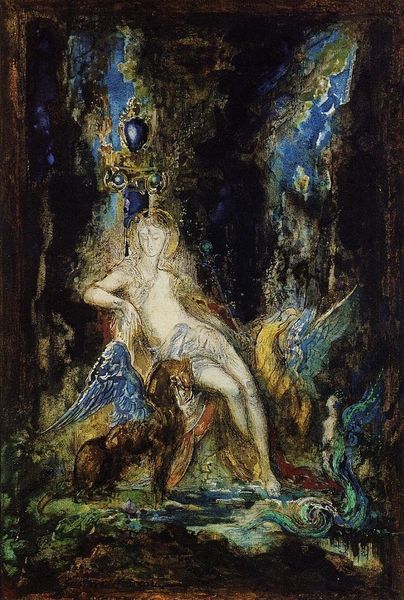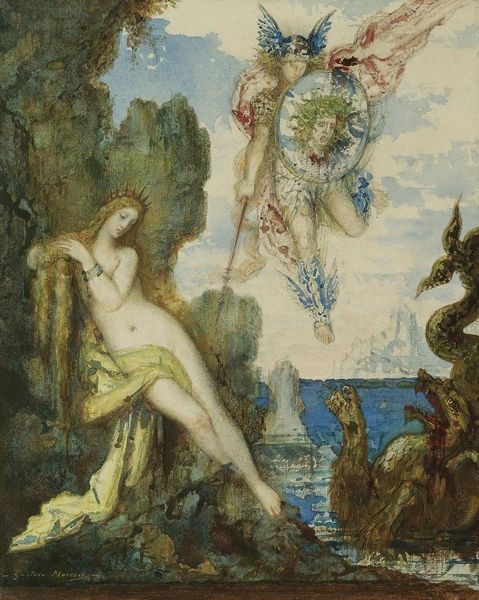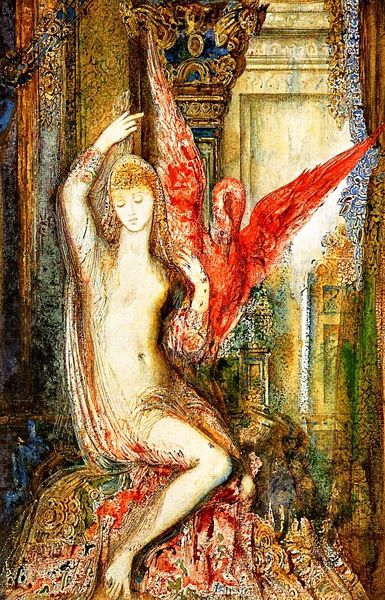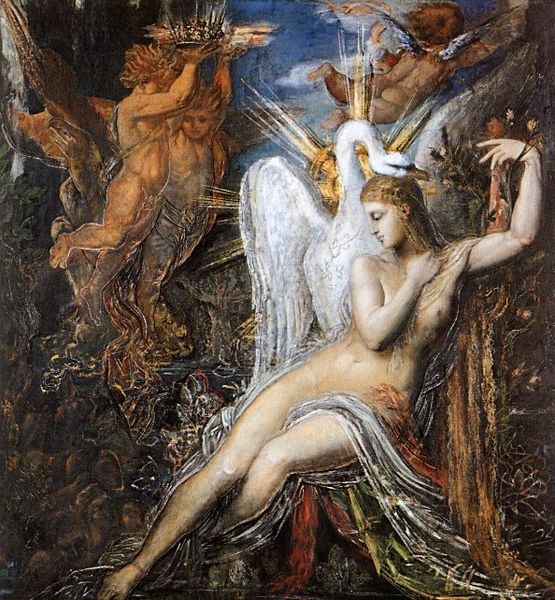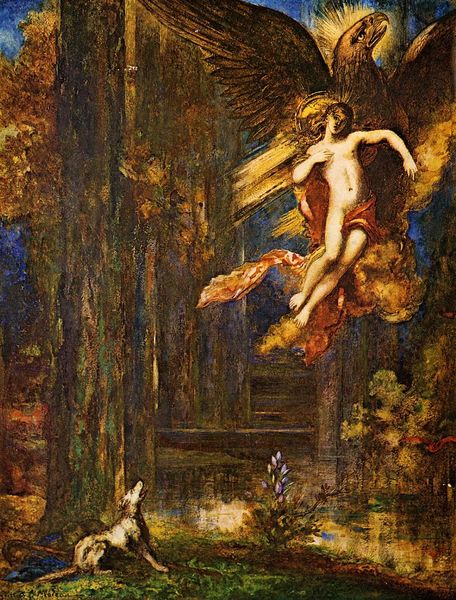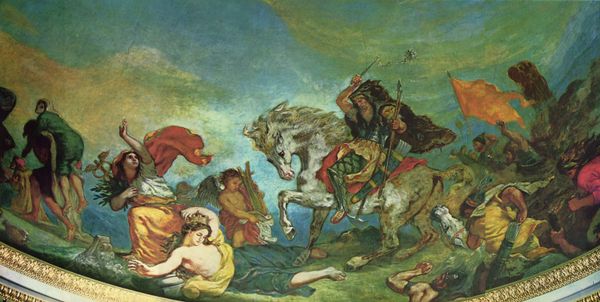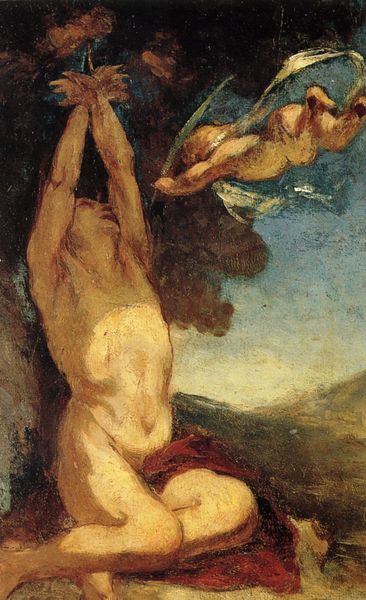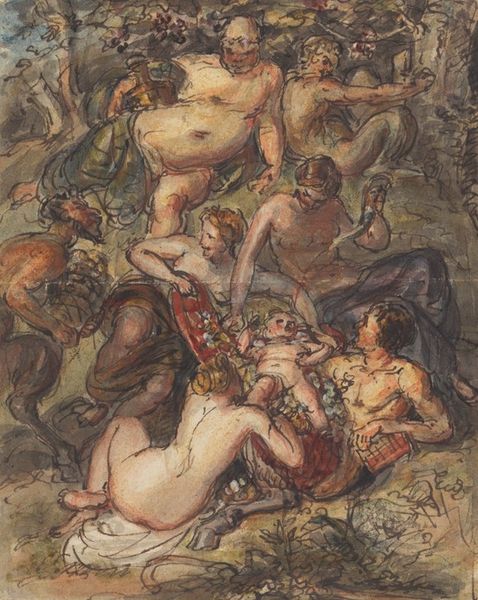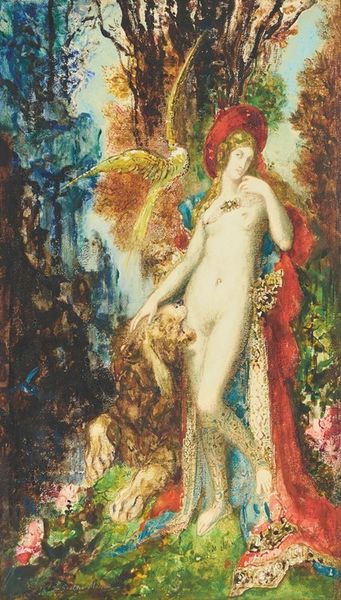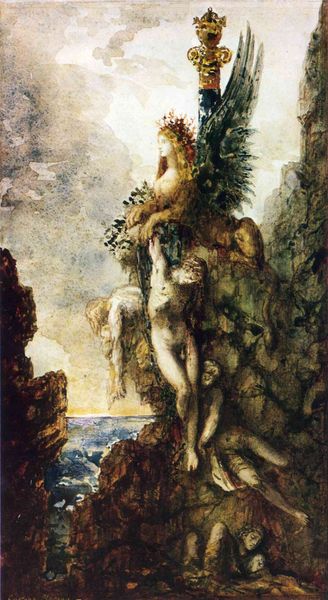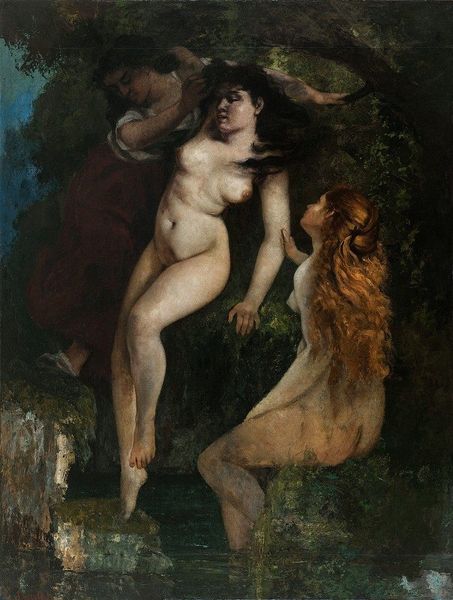
Copyright: Public domain
Editor: This is Gustave Moreau’s 1869 oil painting, “The Abduction of Europa,” currently housed at the Wadsworth Atheneum. There is an ethereal quality to the painting, the subjects seem as if they are emerging from a hazy dreamscape. How do you interpret the symbolism employed here through its visual form? Curator: Formally, the composition directs our gaze in a dynamic diagonal, punctuated by Europa's figure and the bull's forceful stance. Consider Moreau's brushwork: loose, almost dissolving form, a hallmark of Symbolism, but consider how it impacts the narrative. The colors are not mimetic; observe how reds, blues and whites bleed into one another. Where do you think this non-naturalistic application of color leads us? Editor: I suppose that Moreau isn't simply retelling the myth, but focusing more on its emotive impact. Curator: Precisely. The painting uses classical iconography, but its visual language suggests a shift away from academic realism and into the realm of subjective feeling. Consider also the texture. The impasto in areas gives weight, while washes elsewhere seem immaterial. It’s about the tensions between representation and abstraction, material presence and the fading of form. Editor: It’s interesting how the visible brushstrokes and layering of paint make you conscious of the artist's process, it moves beyond just illustrating the scene, to emphasizing how the image came into being. Thank you, I can see how it opens new avenues for understanding the art object itself. Curator: Yes, by considering the work’s formal devices and what those imply, we see that the real abduction taking place here is perhaps the viewers' capture into a dream-state where meaning is evocative rather than prescribed.
Comments
No comments
Be the first to comment and join the conversation on the ultimate creative platform.
